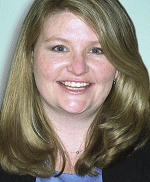Making Waves
##AUTHORSPLIT##<--->
States and districts are implementing technology integrationefforts that recognize the ripples running across the ed tech world. AS THE WORLD HAS MOVED from the agricultural to the industrial to the informationage, it has become more complex and interconnected. Our society was oncelike a feather bed-- push down on the corner and only the corner is affected. Sinceindustrialization, it is more like a water bed-- push down on the corner and thewaves affect the entire area as they move across it.
AS THE WORLD HAS MOVED from the agricultural to the industrial to the informationage, it has become more complex and interconnected. Our society was oncelike a feather bed-- push down on the corner and only the corner is affected. Sinceindustrialization, it is more like a water bed-- push down on the corner and thewaves affect the entire area as they move across it.
And so it is with education technology as the field matures. Over time, the technologies in K-12 schools have grown more complex and our uses of them more sophisticated-- moving figuratively from feather bed to water bed. At one time we thought we could install a computer lab in a school, teach computer literacy, and we'd be done. Now we realize we're never done. Schools not only need additional tools, but the tools they need depend on other technology products and services.
The growing complexity of educational technology was at the front of the minds of SETDA (State Educational Technology Directors Association) board members in preparation for a meeting with US Secretary of Education Margaret Spellings. We wanted to communicate to Spellings and her staff what it takes to successfully bring K-12 schools into the 21st century. We identified the following elements:
- Visionary leadership for technology-aided systemic change.
- Involvement in and ownership of the leaders' vision among all stakeholders.
- Rigorous curriculum, dynamic content, multiple resources, and relevant technology tools in all subject areas, accessible by teachers, parents, and students.
- Ongoing and sustainable professional development for teachers and administrators through such models as instructional technology coaches and technologically linked communities of learners.
- Ongoing use of data to individualize instruction for all students and to evaluate the effectiveness of various programs.
 Armed with talking points when we sat down with Secretary Spellings, we stressed that as technology becomes more prevalent in schools and also more complex, we must acknowledge the interrelationships and interactions among these five concepts. Lack of bandwidth will affect students and teachers trying to use digital content. Lack of teacher training will affect how well teachers use technology, or even whether students use technology at all.
Armed with talking points when we sat down with Secretary Spellings, we stressed that as technology becomes more prevalent in schools and also more complex, we must acknowledge the interrelationships and interactions among these five concepts. Lack of bandwidth will affect students and teachers trying to use digital content. Lack of teacher training will affect how well teachers use technology, or even whether students use technology at all.
As you will see in this, our annual special issue devoted to state and district efforts at classroom technology integration, the important interplay of elements is being recognized. A 1-to-1 laptop program in Maine middle schools may have failed without administrative support and sustained professional development. And an elementary school in Oregon may not have improved lagging writing scores without a program that used laptops, projectors, and cameras inside and outside of the classroom.
Our message to Secretary Spellings was the same one we offer to you: Creating the 21st-century classroom is an effort that will involve many steps-- and taking just one may not accomplish much more than taking none at all.
Geoffrey H. Fletcher, Editorial Director of T.H.E. Journal, andMary Ann Wolf, Executive Director of SETDA
This article originally appeared in the 07/01/2008 issue of THE Journal.